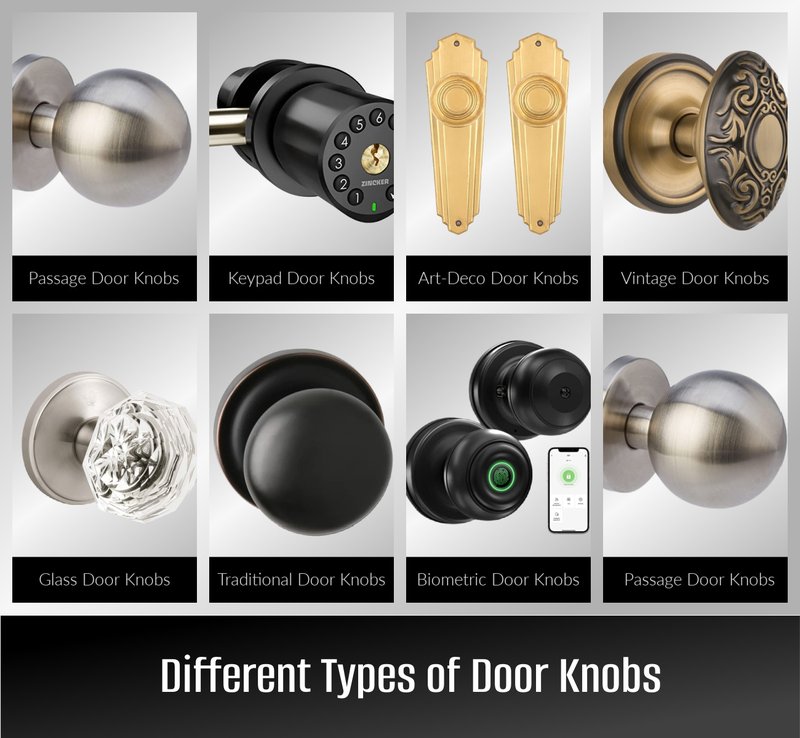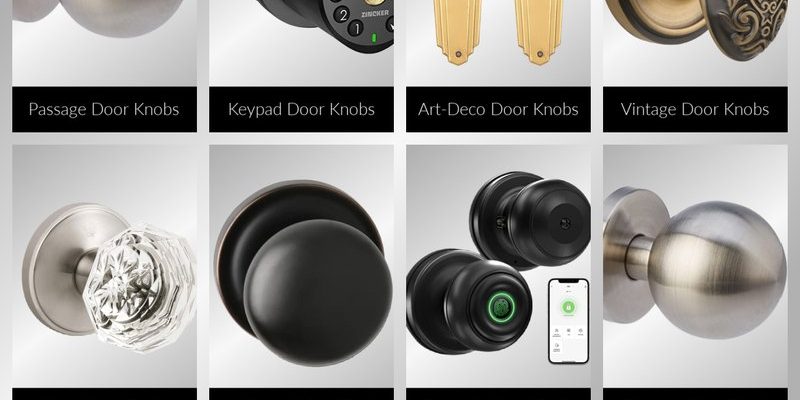
There are various types of door knobs out there, each designed for specific functions. Some are more secure, while others are more stylish. Whether you’re looking to swap out an old knob or just curious about what you have, identifying the type is your first step. Don’t worry if you’re not an expert—this process is simpler than it seems. Grab a coffee, and let’s chat about the different styles and how to recognize them.
Understanding the Basics of Door Knobs
Before we get into specifics, let’s make sure you understand what we mean by “door knob.” A door knob is not only a functional item that allows you to open and close a door; it’s also an important design element in your home. Knowing the types of interior door knobs can help you maintain security and aesthetics, two essential factors in any home.
Door knobs come in various styles, each with its own unique mechanism and purpose. Whether it’s a simple twist, a lockable option, or a sliding mechanism, each type serves specific needs. If you’re thinking, “But how do I know which one I have?”—don’t worry! We’ll discuss how to identify your knob’s type shortly.
Types of Interior Door Knobs
There are several types of interior door knobs to consider. Some of the most common types include:
- Passage Knobs: These knobs are generally used for doors that don’t require locking. For instance, think about a closet or a hallway door. They allow free passage without any security features.
- Privacy Knobs: You’ll find these on bathroom or bedroom doors. They usually have a simple locking mechanism, typically requiring a push-button to lock and a pinhole unlock from the outside.
- Entry Knobs: If you think of front doors or any door that needs more security, you’re thinking of entry knobs. These are often equipped with a lock and require a key to open.
- Dummy Knobs: These are purely decorative and don’t turn at all. They’re often used on doors that don’t need a functional knob, like pantry doors.
Understanding these types is crucial when you’re looking to replace a knob or simply want to know more about your home’s fixtures.
How to Identify Your Door Knob Type
Now that you know the common types of door knobs, how do you figure out which one you have? Here’s a step-by-step guide to help:
1. Examine the Function: Start by considering where the knob is located. Is it on a bathroom door, a closet, or your front entry? This gives you a hint about its type.
2. Check for a Locking Mechanism: Turn the knob and see if it has a lock. If it does, try to determine if it’s a simple privacy lock (like in bathrooms) or a more secure entry lock.
3. Look at the Design: Sometimes the design can give you clues, too. A passage knob will have a more straightforward, clean design, while an entry knob might be ornate.
4. Consider the Feel: Turn the knob and notice how it feels. Is it stiff, smooth, or does it have any unusual features like a button on the side? Knowing how it operates can help identify its type.
If you still can’t figure it out, don’t hesitate to search online for images or ask a friend who might know a thing or two about home fixtures!
Comparing Privacy and Entry Knobs
You might be wondering about the differences between privacy knobs and entry knobs. Here’s a quick breakdown to help clarify:
– Security Level: Entry knobs are designed for security. They usually come with a deadbolt or a more complex locking mechanism that requires a key. This makes them suitable for doors leading outside or those needing an extra layer of security. In contrast, privacy knobs merely keep prying eyes away but can be easily opened from the outside in case of an emergency.
– Usage: Privacy knobs are perfect for spaces that need a little personal space, like bathrooms or bedrooms. You lock it from the inside and can easily unlock it with a simple tool if someone needs access. However, entry knobs are meant for main entrances and should provide a secure locking system.
Understanding these differences will not only help you identify your door knobs but also ensure you choose the right one when updating or replacing.
When to Replace Your Door Knob
Sometimes the best choice is to replace an old door knob, but how do you know when it’s time? Here are a few signs to look out for:
– Worn Out Mechanism: If the knob feels loose or doesn’t turn smoothly, it might be time for a replacement. A door knob should function without any effort; if you’re struggling, it’s not doing its job well.
– Security Concerns: If your door knob is outdated or if you’ve recently moved into a new home, consider replacing it for security reasons. Old knobs can be easy targets for unwanted entry.
– Design Changes: Renovating a space? Sometimes a fresh coat of paint or new decor calls for updated hardware. It’s a small change that can make a significant impact on the overall look of a room.
Replacing a door knob doesn’t have to be a daunting task. Once you know what type you need, you can easily find a replacement that matches your home’s style.
Understanding the type of interior door knob you have is more than just a fun bit of knowledge; it’s essential for maintaining the functionality and security of your home. Whether you’re looking to replace an old knob, spruce up your space, or simply satisfy your curiosity, knowing what you have makes all the difference.
Remember, a door knob might seem like a small detail, but it plays a significant role in your home’s overall atmosphere and function. So, the next time you walk past that door, take a moment to appreciate its purpose. And if you ever find yourself needing a change, you’ll know exactly what to look for!
